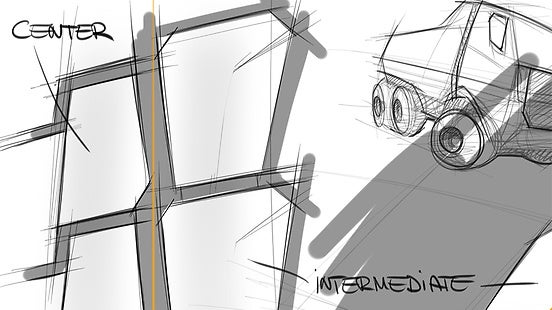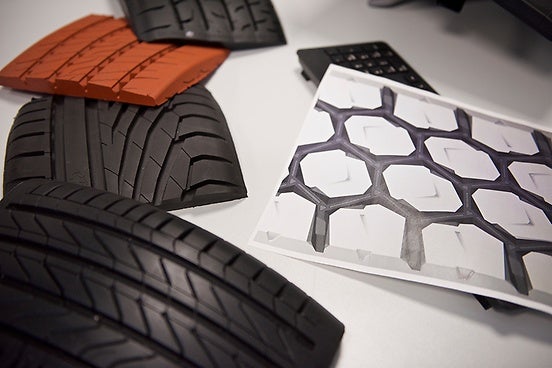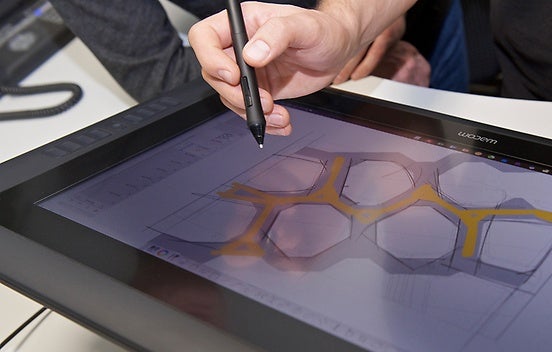
Tyre Design
An industrial design team at Hanover-Stöcken is responsible for creating the tyres’ distinctive design, with support from designers in Puchov, Slovakia and colleagues at the Fort Mill facility in South Carolina, USA. This global team designs all of Continental’s brands and tyre types worldwide.
There are three aspects that are especially important when designing tread patterns and sidewalls:
1. Since most new tyres are the successors of previous models, their appearance must set them apart from their predecessors by emphasising the new and innovative features.
2. A tyre’s specific features should be immediately obvious to the end customer. As well as being important for product presentation in the media, this also helps tyre dealers to sell the product.

3. The tyre’s design must be clearly distinguishable from its competitors and easily recognisable.
Every year, Continental brings between 15 and 20 new tyre models to market around the world. This means that the team is always working on several products at the same time; each tyre development project takes an average of two to three years to complete.
Every year, Continental brings between 15 and 20 new tyre models to market around the world.
Design and development
The tyre designers work in close-knit project teams alongside developers, tread pattern specialists, compound engineers and marketing professionals. The creative freedom that the designers are able to exercise is of course limited by the demanding technical specifications that must be met by any new tread pattern. It can be particularly challenging to create a design that is compatible with these specifications; the extent to which the tread pattern can be varied is always determined by a combination of design and performance criteria. The fact that tread pattern performance is tested repeatedly in a series of development loops also provides an opportunity to repeatedly test and optimize the design, as well as to explore different design options.

From sketchpads to 3D printers
Designs are often initially created with a pencil and a sketchpad, before being refined with the aid of graphics programs and converted into 3D CAD models. High-end computer simulations are then carried out to further optimise the tread pattern design. 3D printers have become a standard tool of the trade, used to produce initial hands-on models that designers can work with during the very early stages of a product’s development.

Related articles
-
 2024/10/04Special LabsRead more
2024/10/04Special LabsRead more -
 2023/05/18Cutting workshopRead more
2023/05/18Cutting workshopRead more -
 2023/05/18X-ray and CT tyre analysisRead more
2023/05/18X-ray and CT tyre analysisRead more